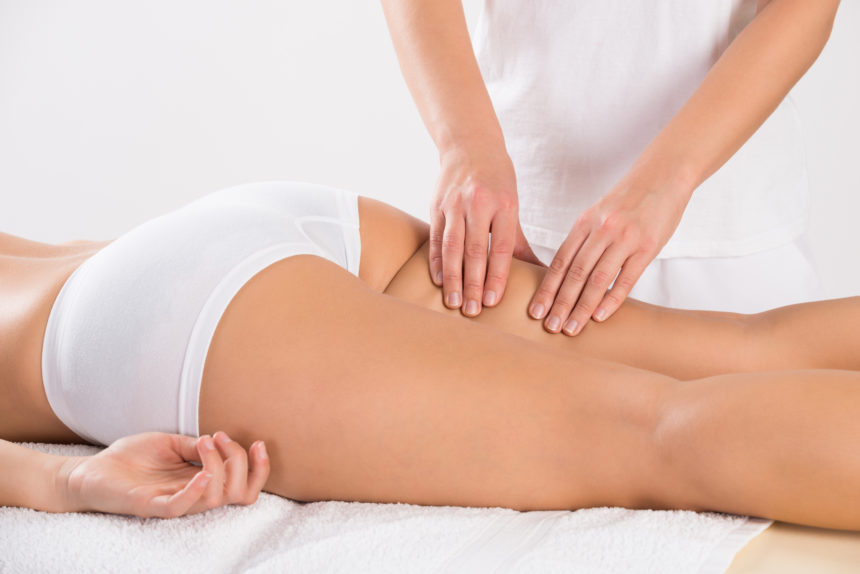Are there long-term treatments for cellulite? Cellulite affects 90% of women, whether plump or skinny! And it is visible with the classic mattress effect “orange peel” skin, unsightly dimples and craters that ruin life for many.
The areas of the body where cellulite tends to lurk are:
- Thighs
- Buttocks
However, it can “appear” anywhere including:
- Abdomen
- Arms
- Legs
In addition to ruining the figure, cellulite can cause issues of self-confidence or self-esteem, thus affecting the quality of life.
The treatments available are not all long-term; they generally require several sessions and high costs.
If you decide on plastic surgery, the times of convalescence, potential side effects and costs are discouraging.
Long-term treatments: what is cellulite?
Knowing the structure of cellulite before undergoing long-term treatments is indispensable.
Cellulite is multifactorial and these factors are often difficult to control.
Many believe it is a problem of fat that can be eliminated with diet and physical exercise, but it has been seen that this is not the case.
Fat is a problem but according to recent studies, cellulite is a problem regarding the structure of the subcutaneous tissue. Today’s most advanced treatments consider cellulite a structural problem and therefore act on the structure of cellulite itself.
Long-lasting cellulite treatments: a look at the treatments available
Few treatments regard the structure of cellulite; only recently have treatments become available that act by severing the fibrous septae. In fact, little is said about non-surgical and non-invasive treatments that act on the fibrous septae.
Long-lasting cellulite treatments: causes, etc.
There are many causes of cellulite; there may be multifactorial or aggravating situations, but among the most common are:
- Aging
- Hormones
- Genetics
- Changes in weight
These factors can highlight orange peel skin in a marked and visible way.
How can that be possible?
- Adipose cells increase in volume
- Subcutaneous fibrous septae trap them
- Fat pushes on the skin
- This is seen as the effect with craters and dimples
A healthy lifestyle with proper nutrition and regular physical exercise helps reduce the visible effect of cellulite. Treatments should do the rest even if in many cases this has not been proven.
How do the treatments work?
Many anti-cellulite treatments act:
- superficially
- by improving the functionality of microcirculation and the lymphatic system
- few treat cellulite at the structural level
How do you choose the right doctor for long-lasting cellulite treatments?
Before seeing a doctor, it is a good idea to already have information on the treatment you want and above all to clearly understand the reasons why you would like to have these treatments. You should be aware and informed about everything you will have to face. Before starting any treatment, you should have realistic expectations about the results. The expert doctor or plastic surgeon should have had specific, appropriate training, certificates and qualifications for performing individual treatments.
Long-lasting cellulite treatments: how to decide on a cellulite treatment that acts at a structural level.
Long-lasting cellulite treatments: what is severing of the fibrous septae?
This is a technique that acts at a structural level, severing the thick fibrous septae responsible for the formation of orange-peel skin.
There may be surgical techniques:
- Subcision
- Laser
- Minimally-invasive non-surgical techniques
- tissue stabilized guided subcision
Long-lasting cellulite treatments: who is tissue stabilized guided subcision for?
This new minimally-invasive treatment is for those who:
- Have little time
- Prefer a minimally-invasive technique
- Ask for a short procedure
- Want a speedy recovery
- Non-invasive
- For THIGHS AND BUTTOCKS
- Authorization by the FDA as an anti-cellulite treatment and EC certification
- Results that can last for 2 years
- State-of-the-art technology that allows severing of the fibrous septae
- Minimum risk of side effects
- A treatment that lasts 45 minutes
- Local anaesthesia
- Does not require a period of convalescence
- Leaves no scars
Long-lasting cellulite treatments: side effects
Side effects may include:
- Bruising
- Swelling
- Pain
- Localised redness
More studies are needed to evaluate the long-term effects because at present it is not known whether cellulite can reform once the fibrous septae have been severed.
This long-term treatment always requires an expert doctor or plastic surgeon working in appropriate facilities. The choice of doctor and facility are part of the success of treatment and satisfaction with results.


